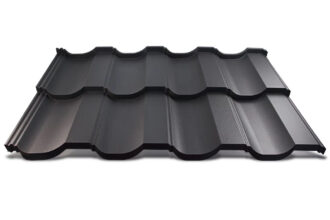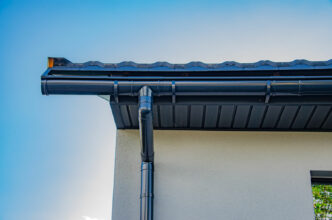The roof plays an important role in every house, as it makes its coping and protects against weather conditions. We present the types of roof truss structures, their properties and application.
What is a roof truss?
The roof truss is a frame, a skeleton of the roof, usually wooden. Its task is to transfer the load of the roof covering from the load out of its own load, snow or wind, as well as between the individual elements of the roof truss through the carpentry joints. The key elements of each roof truss are the roof trusses. There are several trusses in every roof on which the roof covering rests.
Rafter trusses
The rafter truss is the simplest type of roof truss, however the least stable one. There are two basic types of rafter roof structures:
- a rafter-beam truss – a pair of rafters together with the wooden ceiling beam form a three-element truss, based on the external walls of the building, and the beams forming the wooden ceiling are directly supported on the wall or on bottom chord,
- truss with rafters based on the walls – the rafters are connected in the ridge and based on the wall panels, and these are attached to the rim, the truss consists of only two elements and the ceiling takes over the function of the third side of the triangle.
A collar beam
The collar beam is one of the most frequently used roof designs. It is relatively simple to make and cost-saving. The structure is similar to a rafter roof, but a horizontal element has been added – a collar – a structural element that joins and stiffens both the rafters, usually placed halfway along the rafters or slightly above. There are two types of collar roofs:
- the classic collar beam – which is applied when the collar beam has a length not exceeding 3.5 m, for attics, in the case of roofs with a small angle of inclination, knee walls are made of brick to ensure the appropriate height of the interior,
- the purlin-collar beam truss – which has one or two stud walls, forming a series of posts, placed on the ground board and connected at the top with an intermediate purlin, that type of truss is used for roofs with larger spans.
The purlin-tong truss
The purlin-tong truss is the most universal type of roof truss. The can be applied to the following constructions:
- flat and steep roofs – with a slope angle of 6 ° to 70 °,
- single-pitched and gable roofs,
- roofs with and without an attic,
- roofs with breadth up to 16 m.
The following types truss can be distinguished among the purlin-tick-type structure:
- a typical purlin and tick truss – made of two types of trusses: the main and the intermediate ones, applied in roofs with spans from 9 m to 10 m,
- a purlin-tong truss with a wooden knee wall – most often used in buildings with an attic,
- a flat purlin-tick roof – usually with one ridge cap, supported on a stud wall, used for roofs with a span of up to 8-9 m and an inclination angle of 6 ° to 18 °,
- a shed roof – usually as a single-pitched roof type, it is used over extensions, over long and narrow buildings, with a span up to 6 m.
Roof grid trusses
Roof grid trusses are used in the case of frame wooden houses. They are more often applied in single-family wooden and brick houses. It is a solution for gable roofs with a slight inclination angle from 14 ° to 23 ° with a non-usable attic.


